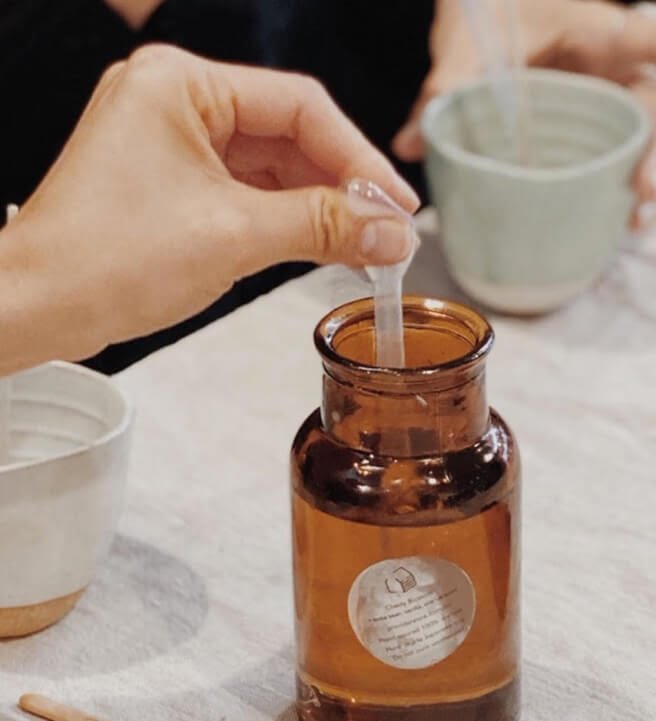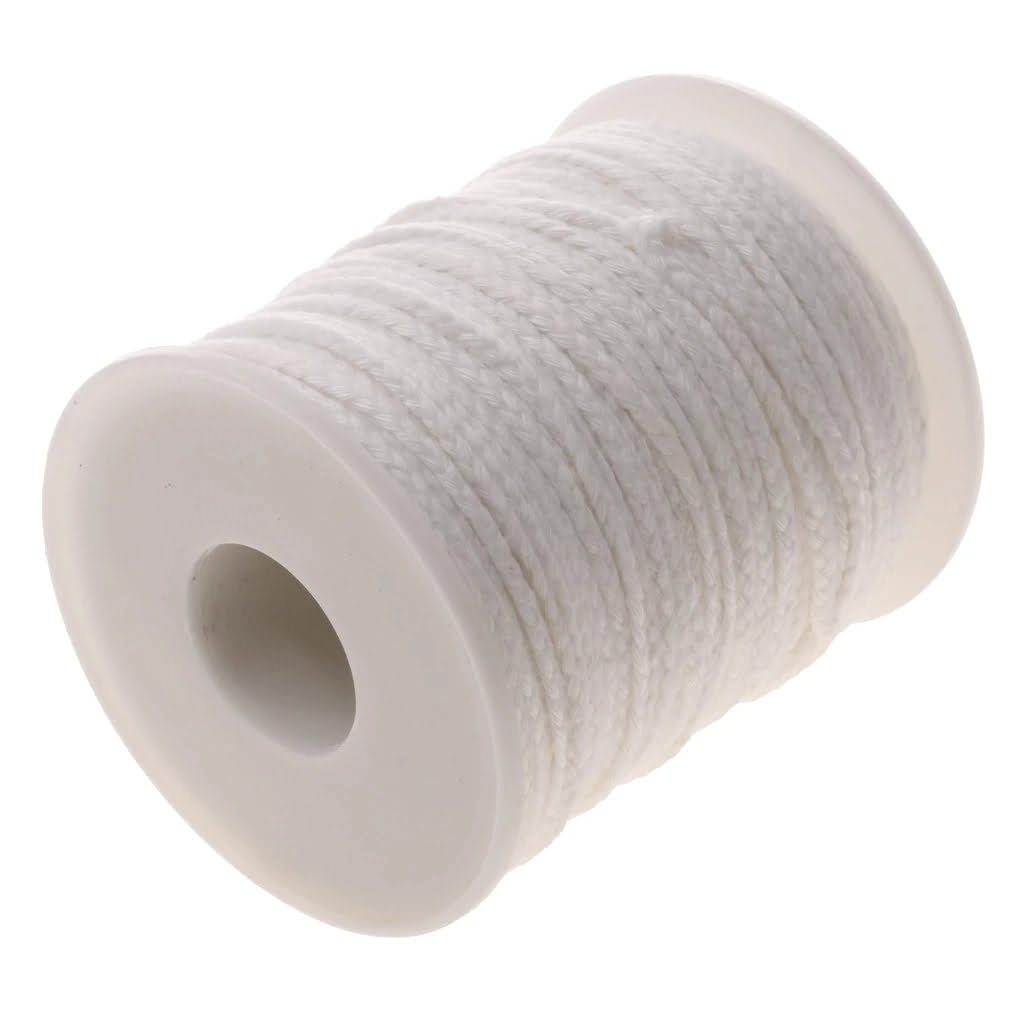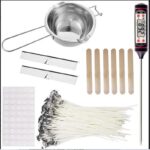The world of candle and soap making has become increasingly popular in recent years, with more individuals seeking creative and fulfilling outlets for their creativity. But which craft is truly more profitable?
In this article, we will delve into the lucrative world of candle and soap making, exploring the rising trend and popularity of these industries. From materials to techniques, demand to market saturation, and pricing strategies to target markets, we will analyze the potential profitability of both candle and soap making to help you make an informed decision.
Candle making has long been a beloved hobby and a way to bring warmth and ambiance into homes. The process involves melting wax, adding fragrance oils or essential oils, pouring into molds or containers, and allowing them to solidify. With the growing interest in handmade goods and natural products, there is a consistent demand for unique candles.
However, there is also fierce competition within the market due to the increasing number of candle makers. We will discuss the pros and cons of candle making as well as identify potential profit margins within this segment.
Similarly, soap making has experienced a resurgence in popularity as people seek natural alternatives to commercial soaps that are often filled with harsh chemicals. The art of soap making involves blending oils or fats with lye (sodium hydroxide), adding fragrances or essential oils, pouring into molds, and allowing it to cure over several weeks.
While soap making allows for endless creativity in terms of shapes, colors, and scents, it too faces competition within the industry. We will examine the advantages and disadvantages of soap making as well as explore its potential profitability in today’s market.
Whether you are considering starting a small business or simply looking for an additional source of income through crafting pursuits, understanding which path may be more profitable – candle or soap making – is crucial.
With detailed analyses on cost factors such as materials, techniques involved in each craft; current market demands; pricing strategies used by successful makers; target markets and their preferences and purchasing power; marketing strategies for effective promotions, distribution channels ranging from e-commerce platforms to local markets; and real-life success stories from makers who have achieved profitability, this article will provide valuable insights and recommendations.
By the end of this article, you will be equipped with the knowledge to choose the path to profitability in candle or soap making that suits your goals and aspirations.
Demystifying Candle Making
Candle making is a craft that has been practiced for centuries, and it continues to be a popular hobby and business venture today. In this section, we will delve into the pros and cons of candle making, including the materials and techniques involved, as well as the potential profitability of this craft.
When it comes to candle making, one of the major advantages is the wide range of materials available. From different types of wax, such as soy wax and beeswax, to various fragrances and colors, candle makers have endless options to create unique products. Additionally, candle making techniques can be easily learned through online tutorials or classes, allowing beginners to get started with minimal investment.
However, there are also some drawbacks to consider when venturing into the world of candle making. One key concern is market saturation. With a relatively low barrier to entry and growing popularity in recent years, the candle market has become highly competitive. This means that candle makers need to find unique selling points or target niche markets to stand out from the crowd.
In terms of profitability, it’s important to weigh the potential profit margins against the costs involved in candle making. While candles can be sold at various price points depending on factors like size and design complexity, there are expenses associated with sourcing materials, packaging, marketing efforts, and potentially renting or setting up a workspace. It’s essential for candle makers to carefully calculate their costs and accurately price their products to ensure profitability in such a competitive market.
Unveiling the Art of Soap Making
Soap making is a captivating craft that has gained considerable popularity in recent years. This section will explore the advantages and disadvantages of soap making, providing valuable insights for those considering venturing into this profitable industry.
The Process and Ingredients
One of the key advantages of soap making is the opportunity to create unique, personalized products. Soap makers have the freedom to experiment with different ingredients, scents, colors, and shapes, allowing them to tap into their creativity and produce one-of-a-kind items.
The process typically involves mixing oils or fats with sodium hydroxide (lye) to create a chemical reaction known as saponification. Various additives like herbs, essential oils, or exfoliants can be incorporated to enhance the soap’s properties and appeal.
However, it is important to note that soap making requires precision and caution due to the use of lye. Safety measures must be strictly followed when handling this caustic substance to mitigate any potential hazards. Additionally, acquiring the necessary skills for creating high-quality soaps may require practice and experimentation.
Market Demand and Competition
The demand for handmade soaps has been steadily increasing as more consumers seek natural and environmentally-friendly alternatives to commercially-produced products. Handmade soaps are often made with organic ingredients or natural additives, appealing to individuals who prioritize sustainability and skin health. This niche market provides ample opportunities for soap makers who can differentiate their products based on unique qualities such as scent combinations or specific skin benefits.
Despite the growing demand for handmade soaps, competition within the industry is fierce. To stand out from competitors, it is crucial to develop a distinct brand identity through innovative packaging, attractive labeling designs, and effective marketing strategies. Building customer loyalty through quality products and exceptional customer service can also help establish a competitive advantage in this market.
Profitability Potential
The profitability potential of soap making depends on various factors, including production costs, pricing strategies, and market demand. While the initial investment in ingredients and equipment can be relatively high, soap making can offer excellent profit margins. Selling directly to consumers through online platforms or local markets eliminates the need for intermediaries, maximizing the profit per unit sold.
Furthermore, by targeting specific customer segments with unique selling points (such as vegan or organic soaps), soap makers can increase their product value and charge higher prices. However, it is essential to carefully analyze the price points of competing brands within the market to ensure competitiveness without compromising profitability.
Analyzing the Pricing Strategies
When it comes to analyzing the pricing strategies in the candle and soap making industries, there are various factors that need to be considered. Both crafts have their own unique characteristics and target markets, which influences how they set their prices. Let’s take a closer look at the pricing strategies used in each industry and evaluate their impact on profitability.
Comparing Pricing Models:
In the candle making industry, pricing is often based on factors such as the size of the candle, the materials used, and any additional features or embellishments. Candles can range from small tealights to large decorative pillars, and each variation commands a different price point. Additionally, customized or specialty candles tend to have higher price tags due to their uniqueness.
On the other hand, soap making typically follows a different pricing model. Soap makers often price their products based on weight or size rather than intricacy or design. This allows them to maintain consistent pricing for different types of soap while accounting for variations in ingredients and manufacturing costs.
Factors Influencing Pricing Decisions:
Several factors can influence pricing decisions in both industries. First is the cost of materials and ingredients. Candle makers need to consider the price of wax, wicks, fragrance oils, and any additional decorations they use. Soap makers must factor in the cost of oils, lye, essential oils or fragrance oils, and additives like herbs or botanicals.
Another important factor is market competition. If there are many candle or soap makers operating in a particular area or within a specific niche market, it may be necessary to adjust pricing accordingly to remain competitive without sacrificing profitability.
Lastly, perceived value plays a significant role in determining prices. For example, premium ingredients or artisan craftsmanship can justify higher prices for both candles and soaps. It’s important for crafters to understand their target customers’ preferences and willingness to pay so they can position their products accordingly.
The Impact on Profitability:
The pricing strategies employed by candle and soap makers directly impact their profitability. Setting the right prices ensures that the cost of materials, manufacturing, marketing, and distribution is covered while still generating a profit. However, it’s crucial not to overprice or underprice products.
Overpricing may lead to customers opting for more affordable alternatives, resulting in decreased sales volume. On the other hand, underpricing can result in lower profit margins and potentially undervaluing the craft. Therefore, finding the right balance between product quality, pricing, and profitability is key for both candle and soap makers.
Target Market Analysis
Understanding the Target Customers for Candles
When it comes to identifying the ideal customer base for candles, it is essential to consider their preferences, purchasing power, and market behavior. Candles are a popular choice for various purposes such as home décor, relaxation, aromatherapy, and gifts. Therefore, the target customers for candles can vary depending on the specific type of candle being offered.
One key demographic that has shown a significant interest in candles is women aged 25-44. This group often values self-care and creating a cozy ambiance at home. Additionally, individuals who practice meditation or yoga are also likely to be interested in purchasing candles for relaxation purposes. Furthermore, candles make great gift items, attracting customers who are looking for unique presents for occasions like birthdays or holidays.
Identifying the Ideal Customer Base for Soaps
The ideal customer base for soaps can differ from that of candles due to their distinct properties and uses. When analyzing the target market for soaps, it is vital to consider factors such as skin type, personal preferences, and concerns related to skincare.
A prominent customer segment for soaps includes individuals with sensitive skin or those seeking natural alternatives to commercial beauty products. People who prioritize organic ingredients and eco-friendly practices are also more likely to purchase handmade soaps. Additionally, parents looking for gentle and safe options for their children’s skincare needs may be interested in artisanal soaps.
Overall, while there may be some overlap between the target markets of candles and soaps, understanding the specific preferences and needs of potential customers is crucial in effectively marketing these products.
Analyzing Profitability Potential
Determining which craft – candle making or soap making – is more profitable goes beyond merely identifying the target market. It requires evaluating various factors such as production costs, pricing strategies, demand in the market, competition levels, and profit margins.
Both candles and soaps can offer profitable opportunities, but the extent of profitability may differ. Candle making often requires lower production costs compared to soap making as it typically involves fewer ingredients and involves less time-consuming processes. This could potentially lead to higher profit margins for candle makers.
On the other hand, soap making offers unique selling points such as customization options and the growing demand for natural skincare products. However, the presence of larger soap-making companies in the market could pose challenges for new or small-scale soap makers when it comes to competing on price.
Ultimately, analyzing the profitability potential of candle and soap making requires considering multiple factors specific to each craft and conducting thorough market research.
Marketing and Distribution
Once you have created your candles or soaps, the next crucial step is to effectively market and distribute your products. Without effective marketing strategies, your products may go unnoticed in a saturated market. This section will discuss different marketing techniques that can be utilized to promote candles and soaps, as well as explore various distribution channels for reaching potential customers.
Marketing Strategies for Selling Candles and Soaps:
- Online Presence: In today’s digital age, establishing an online presence is essential for promoting your products. Create a professional website or online store where customers can browse and purchase your candles or soaps. Utilize social media platforms to showcase photos of your products, engage with customers, and run targeted advertising campaigns.
- Branding and Packaging: Invest in attractive branding and packaging for your candles or soaps. Eye-catching labels, logos, and product designs can capture the attention of customers and make your products stand out from the competition.
- Influencer Collaborations: Partnering with influencers or bloggers who have a strong following in the beauty or lifestyle niche can help increase brand visibility. Send them samples of your candles or soaps for review or featuring on their platforms.
Distribution Channels for Candles and Soaps:
- E-commerce Platforms: Selling through popular e-commerce platforms such as Etsy, Shopify, or Amazon can expose your products to a wide audience. These platforms provide built-in customer bases and convenient checkout processes that can enhance sales.
- Local Markets and Craft Fairs: Participating in local markets and craft fairs allows you to directly engage with customers while showcasing the craftsmanship of your candles or soaps. These events attract individuals interested in supporting local artisans.
- Wholesale Distribution: Consider partnering with retail stores that align with the aesthetic and values of your brand to distribute your candles or soaps wholesale. This can expand your reach to customers who prefer shopping at brick-and-mortar locations.
| Marketing Strategies | Distribution Channels |
|---|---|
| Online Presence (Website, Social Media) | E-commerce Platforms (Etsy, Shopify, Amazon) |
| Branding and Packaging | Local Markets and Craft Fairs |
| Influencer Collaborations | Wholesale Distribution |
Implementing a well-rounded marketing strategy while utilizing multiple distribution channels can greatly increase the visibility and sales of your candle or soap making business. It is important to continuously monitor and adapt your marketing efforts based on customer feedback and market trends to maximize profitability.
Profitability Case Studies
In this section, we will take a closer look at some real-life success stories from candle and soap makers who have achieved profitability in their craft. These case studies serve as inspiration for aspiring entrepreneurs in the industry and provide valuable insights into the strategies and factors that contribute to profitability.
- Case Study 1: The Candle Co.
The Candle Co. is a small business that started as a passion project for its founder, Sarah. She began making candles as a hobby but soon realized the potential for profitability in the market. By focusing on high-quality ingredients, unique scents, and attractive packaging, Sarah was able to carve out a niche for her brand.
Sarah’s marketing strategy primarily relied on social media platforms such as Instagram and Facebook, where she could showcase her products visually and engage with potential customers. Through consistent branding and collaborations with influencers, The Candle Co. gained traction among candle enthusiasts, leading to increased sales.
- Key Lesson Learned: Providing a unique selling point and leveraging social media platforms can help drive sales and establish a loyal customer base.
- Case Study 2: Suds & Co.
Suds & Co. is known for its premium handmade soaps made from natural ingredients. The company was founded by Alex, who had always been passionate about skincare and wanted to create products that were both gentle on the skin and environmentally friendly.
Through thorough market research, Alex identified a demand for natural soaps with appealing scents. He sourced high-quality ingredients locally and focused on creating aesthetically pleasing designs that would attract customers’ attention.
To promote his brand, Alex attended local craft fairs and farmers markets, which allowed him to interact directly with potential customers while showcasing his soaps’ quality. Additionally, he established partnerships with local boutiques to expand his distribution channels.
- Key Lesson Learned: Engaging directly with customers through events like craft fairs can help build brand awareness and establish your soap-making business as a local favorite.
Case Study 3: The Natural Home
The Natural Home is a successful business that specializes in both candles and soaps, catering to environmentally conscious consumers. Founded by Lisa, the company prides itself on using sustainable and organic ingredients, appealing to an increasingly health-conscious market.
Lisa’s key strategy for profitability was diversification. By offering both candles and soaps, The Natural Home was able to target a broader customer base and boost sales. The company also emphasized eco-friendly packaging made from recycled materials, which resonated with their target market.
To reach customers beyond their local community, Lisa established an online store through an e-commerce platform. This allowed her to expand her reach nationwide and even internationally.
- Key Lesson Learned: Diversify your product offerings and leverage e-commerce platforms to access a wider customer base and increase sales potential.
These case studies demonstrate that profitability is achievable in both candle making and soap making industries. Success lies in identifying a unique selling point, understanding the target market, implementing effective marketing strategies, and adapting to changing consumer trends. Whether you choose to embark on candle making or soap making journey, careful planning and strategic decision-making are essential for maximizing profits.
| Company | Lessons Learned |
|---|---|
| The Candle Co. | – Providing a unique selling point
|
| Suds & Co. | – Engaging directly with customers at local events
|
| The Natural Home | – Diversifying product offerings (candles and soaps)
|
Conclusion
In conclusion, both candle making and soap making offer potential profitability for craft enthusiasts and entrepreneurs. The rising trend and popularity of these industries indicate a strong demand for unique, handmade products. However, it is important to consider the pros and cons of each craft before deciding which path may be more profitable.
Candle making offers a wide variety of materials, techniques, and costs involved. While there may be a growing market saturation in some areas, there are still opportunities to differentiate your products and cater to niche markets. The potential profit margins in the candle making industry can be lucrative if pricing strategies are carefully analyzed and implemented.
On the other hand, soap making has its own advantages and disadvantages. The process requires specific ingredients and expenses that should be taken into account when considering profitability. Despite market competition, soap makers can find success by targeting specific customer preferences and creating high-quality products.
When analyzing pricing strategies between candles and soaps, it is crucial to consider various factors that influence profitability. These factors include the cost of materials, time invested in production, desired profit margins, and perceived value by customers. Understanding the target market preferences and their purchasing power will also contribute to determining optimal pricing models.
In order to achieve profitability in either craft, effective marketing strategies are essential. Utilizing online platforms such as e-commerce websites or social media can help reach a broader audience while also exploring local markets for direct sales opportunities. By considering successful case studies from experienced candle and soap makers, aspiring entrepreneurs can learn valuable lessons about business strategies and unique selling points.
Ultimately, choosing between candle making or soap making as a path to profitability will depend on individual preferences, skill sets, available resources, and market conditions. Both crafts have the potential for success if approached with passion, creativity, and a thorough understanding of the target audience’s needs. By weighing the pros and cons outlined in this article alongside personal considerations, readers will be able to make an informed decision about which craft is more suitable for their profitability goals.
Frequently Asked Questions
Is soap and candle making profitable?
Soap and candle making can be profitable ventures depending on various factors such as market demand, quality of products, pricing strategy, and marketing efforts. The profitability of these businesses largely depends on the ability to create unique and desirable products that stand out in a competitive market. Additionally, targeting niche markets or specializing in specific types of soap or candles can help increase profitability by appealing to a specific customer base.
Effective branding, packaging, and marketing can also play a crucial role in driving sales and profitability. It is important to conduct thorough research, understand the target market, and carefully manage costs to maximize profits in this industry.
How profitable is soap making?
The profitability of soap making can vary greatly depending on several key factors. Firstly, identifying a niche that has high demand or creating specialty soaps that cater to specific customer preferences can significantly impact profitability. Crafting soaps with high-quality ingredients and unique designs can command higher prices and potentially increase profit margins.
Production costs, including raw materials, equipment maintenance, and overhead expenses need to be efficiently managed to ensure profitability. Another crucial aspect is effective marketing and distribution channels to reach the target audience effectively. Building brand awareness, developing consistent customers base, and exploring both online and offline sales platforms are essential strategies for enhancing soap making profits.
How profitable is candle making?
Candle making has the potential to be a profitable business venture given certain conditions are met. One major factor influencing profitability is the ability to create candles that captivate consumers with their quality craftsmanship, unique designs, or specialty scents. This allows for differentiation from mass-produced candles found in stores while potentially attracting customers willing to pay premium prices for artisanal products.
Carefully selecting affordable yet high-quality supplies as well as implementing efficient production processes can also contribute to maximizing profit margins within candle making. Moreover, developing strong relationships with suppliers for favorable pricing terms may help reduce costs further down the line. Effective marketing strategies including social media promotions or collaborations with other complementary brands can additionally drive sales and increase profitability.

Welcome to my candle making blog! In this blog, I will be sharing my tips and tricks for making candles. I will also be sharing some of my favorite recipes.





